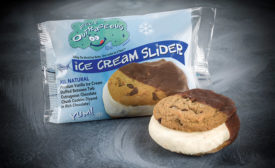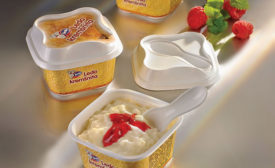Articles by Hallie Forcinio
Other trends focus on food safety, consumer convenience, shelf impact and packaging line flexibility
Read More
Flexible packaging is a success
Flexible packaging continues to capture market share in the dairy case
March 20, 2019
Dairy packaging sees healthy growth
Packaging innovations address shelf life, sustainability and more.
August 8, 2018
Flexible packaging captures market share
Growth drives advances in machinery, materials and package design.
March 13, 2018
Rigid containers get a modern twist
New offerings boost shelf impact, sustainability and convenience
February 13, 2018
Rigid packaging blends the old with the new
Distinctive shapes and dispensing functions catch consumers’ attention.
October 13, 2017
Sustainable packaging options for dairy foods continues to improve
Demand increases for renewable content and recycled content for milk cartons, yogurt cups and other dairy foods and beverages.
September 15, 2017
Flexible packaging boosts sales
Consumers like packaging that is easy to open and reseal.
August 7, 2017
Cold medals
In-mold labels lick ice cream problems
Froneri Brazil uses an injection-molded cup and a reclosable polypropylene lid. New Orleans Famous Sno-Balls to Go chooses an IML package for better print quality.
July 10, 2017
Shelf life and shelf impact drive dairy packaging
Two other factors garnering attention from brand marketers are convenience and sustainability. Here’s a look at innovative packaging, including aseptic containers and in-mold labels.
June 8, 2017
Stay ahead of the curve. Unlock a dose of cutting-edge insights.
Receive our premium content directly to your inbox.
SIGN-UP TODAYCopyright ©2025. All Rights Reserved BNP Media.
Design, CMS, Hosting & Web Development :: ePublishing










